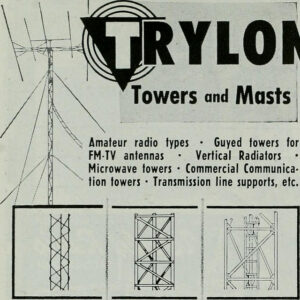Change Is In the Air
Usually I don’t think about the fact that change is literally coming to the airwaves. TV shopping with the mother of The Man of the House really brought the subject into focus though. The change is coming and we’re all going to have to deal with it.
On February 17, 2009, federal law requires that all full-power television broadcast stations stop broadcasting in analog format and broadcast only in digital format. ~ FCC
Our newest television is about 6 years old. So when the change happens we plan on getting a new television. We may also need to get a new TV antenna. Yep, that’s right. No cable for us. Instead we rely on solid technology from a generation ago – the old fashioned TV antenna. Let the change come. We’ll be ready for it with our new TV and our new (but old fashioned) TV antenna.
Helpful Links:


Consumer interest in free over the air digital- HD TV is definitely on the increase. The number of visitors to our web site http://www.dennysantennaservice.com has skyrocketed over the past year, mainly do to the introduction of free over the air digital – HDTV.
Choosing the proper TV antenna for a particular location is the main issue for most. Many consumer’s have a tendency to purchase antennas that are to small to do the job, digital reception is an all or nothing proposition, you’re going to want a strong signal. Also, there is a misconception that all digital – HDTV broadcast signals are on the UHF band (14-69) Currently it’s true, many broadcaster’s are transmitting their digital signals on UHF, because much of the VHF band (2-13) is currently being used to broadcast analog TV signals. However, when the digital transition is complete on February 17th of 2009, the date set when broadcasters will turn off their analog signals, things will change. There are only a handful of broadcast locations across the U.S. that have plans to remain 100% on the UHF band, most areas will have both VHF and UHF digital stations. This means if you purchase a UHF TV antenna now, chances are you may loose the ability to receive a portion of your digital channels in the future. Some areas already have VHF digital stations.
My best advice is to purchase a TV antenna that is large enough to be certain it can easily receive all of the digital broadcast signals in your area, even during poor reception conditions. The antenna should be VHF/UHF capable, unless you are absolutely certain all of your stations are currently UHF, and will remain UHF after the digital transition is complete. To determine the channel number your area digital stations currently broadcast on now, and the channel number they plan to broadcast on after the 2009 analog shutdown date, visit http://hraunfoss.fccgov/edocs_public/attachmatch/DA-06-1082A2.pdf. When you visit this site, start by finding your state and then the city where your area stations are located. The channel number that appears in the first column is the current digital channel number of that station, the second column is the current analog channel number, and the third column is the tentative final channel number destination. The third column is the channel number where the station plans to permanently broadcast their digital signal. VHF channels are 2 – 13 and UHF are 14 – 69. If your not sure where or what stations are available in your area, visit http://www.antennaweb.org. This is a great site to visit, it will provide the city location of the stations in your area and much more.